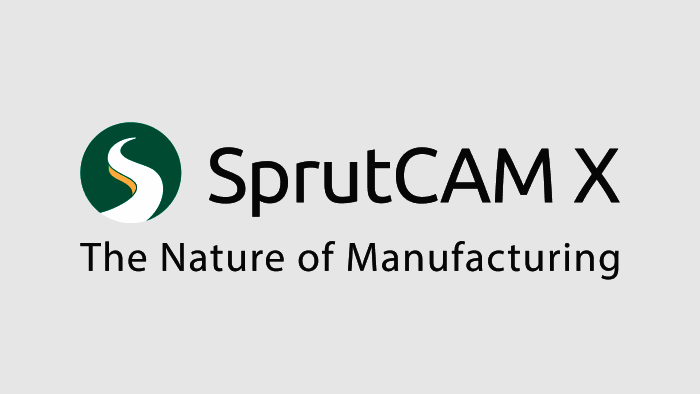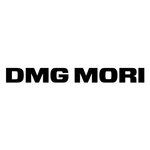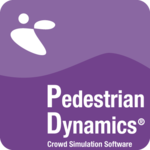Description

FieldView

SprutCAM X
Comprehensive Overview: FieldView vs SprutCAM X
FieldView and SprutCAM X serve distinct functions in the realm of computer-aided technologies, each catering to unique segments of the market. Here is a comprehensive overview of both products:
FieldView
a) Primary Functions and Target Markets:
- Primary Functions: FieldView is renowned for its high-performance post-processing capabilities tailored mainly for computational fluid dynamics (CFD) simulations. It provides tools for visualizing and analyzing complex fluid dynamics data, presenting simulations through interactive and detailed visualization. Features include efficient data handling, parallel processing, and the capability to automate repetitive tasks.
- Target Markets: FieldView predominantly targets industries where CFD is crucial. This includes aerospace, automotive, energy, and other engineering sectors that require simulation-based design and analysis. It serves engineers and analysts who need to make critical decisions based on fluid flow simulations and performance analyses.
b) Market Share and User Base:
- FieldView holds a specialized position in the market for post-processing tools, particularly in industries relying heavily on CFD. While its overall market share is smaller compared to more general CAD or CAE tools, it is a leader within its niche. Users range from major aerospace manufacturers to energy companies leveraging CFD for product design and testing.
c) Key Differentiating Factors:
- Focus on CFD: Unlike more general CAE tools, FieldView’s capabilities are highly specialized for fluid dynamics.
- Advanced Visualization and Automation: FieldView stands out for its ability to handle large datasets efficiently with robust visualization tools and automation options.
- Performance and Interactivity: Emphasizes high-performance data processing and interactive visualization that can deal with complex simulations in real-time.
SprutCAM X
a) Primary Functions and Target Markets:
- Primary Functions: SprutCAM X is a CNC machining and manufacturing software known for its multi-axis machining capabilities. It provides tools for creating optimized toolpaths for a wide range of CNC machinery, supporting processes from 2.5D milling to complex multi-axis machining.
- Target Markets: The software is aimed at industries needing CAM solutions, such as automotive, aerospace, mold making, and machine shops. It is particularly appealing to manufacturers who require advanced, precise, and efficient machining operations.
b) Market Share and User Base:
- SprutCAM X occupies a competitive space in the CAM software market, with a user base that includes both small machine shops and large industrial manufacturers. It competes with other established CAM tools, appealing to users who need versatile machining software with a focus on ease of use and multi-axis capability.
c) Key Differentiating Factors:
- Multi-Axis Machining: SprutCAM X excels in supporting complex machining operations involving multiple axes, which is a primary requirement for many manufacturers.
- Integrated Simulation: It offers integrated simulation capabilities for toolpath verification and optimization within the software, enhancing user efficiency.
- User-Friendly Interface: SprutCAM X is known for its user-friendly interface, making it accessible for users who may not have extensive CAM experience.
Comparison of FieldView and SprutCAM X
- Market Focus: FieldView focuses on CFD post-processing, while SprutCAM X is centered around CNC machining.
- Industry Applications: FieldView suits industries that rely on fluid dynamics analysis, whereas SprutCAM X caters to manufacturing sectors needing sophisticated machining solutions.
- Complexity and Usability: FieldView deals with complex data visualization, whereas SprutCAM X provides advanced but user-friendly machining capabilities.
In summary, FieldView and SprutCAM X are not directly comparable but rather complementary in their niches, catering to different engineering processes—one for fluid dynamics analysis and the other for precision machining.
Contact Info

Year founded :
Not Available
Not Available
Not Available
Not Available
Not Available

Year founded :
2021
+357 25 054746
Not Available
Cyprus
http://www.linkedin.com/company/sprutcam
Feature Similarity Breakdown: FieldView, SprutCAM X
FieldView and SprutCAM X are distinct software products catering to different industries and purposes—FieldView is primarily an agricultural data visualization tool, while SprutCAM X is used for CNC machining and manufacturing processes. Here's a breakdown of their features focusing on similarity, user interfaces, and unique aspects:
a) Core Features in Common
-
Visualization:
- Both FieldView and SprutCAM X offer robust visualization capabilities, though tailored to their specific domains. FieldView provides visual representations of agricultural data, while SprutCAM X offers 3D machining simulations.
-
Data Analysis:
- Both platforms facilitate data analysis. FieldView analyzes agricultural data to optimize farming operations, while SprutCAM X analyzes CNC machining processes to enhance manufacturing efficiency.
-
User Support and Integration:
- Both offer support for integrations with other software systems relevant to their industries, facilitating workflow continuity and enhanced data management.
b) User Interface Comparison
-
FieldView:
- FieldView’s interface is designed with simplicity and accessibility in mind for farmers. It uses a dashboard-style layout to visualize data regarding crop health, weather patterns, and other agricultural metrics. The interface is optimized for mobile and desktop, prioritizing ease of use in the field environment.
-
SprutCAM X:
- SprutCAM X features a more complex and technical interface, reflecting its focus on detailed CNC programming and simulations. The interface includes advanced 3D visualization tools and a comprehensive toolbar, which may require more technical expertise to navigate effectively. It is generally optimized for desktop use, accommodating the detailed nature of machining setups.
c) Unique Features
-
FieldView Unique Features:
- Weather Data Integration: Direct integration of real-time weather data to aid in decision-making for agricultural tasks.
- Satellite Imagery: Utilizes satellite imagery to assess crop health and identify problem areas in fields remotely.
- Prescription Mapping: Generates maps for variable rate application, optimizing inputs like seeds and fertilizers.
-
SprutCAM X Unique Features:
- Advanced CNC Programming: Supports a wide range of CNC machines and allows detailed control over the machining processes, including 5-axis milling operations.
- Collision Detection and Simulation: Provides advanced simulations to detect potential collisions in the machining process, reducing errors.
- Optimized Toolpath Generation: Offers features to automatically optimize toolpaths, enhancing efficiency and reducing machining time.
In summary, while both products offer visualization and data analysis features, their applications and interfaces are tailored to their specific industries. FieldView focuses on simplifying agricultural data management, while SprutCAM X emphasizes detailed manufacturing processes with advanced CNC capabilities. Each has unique features that cater specifically to its target users' needs.
Features

Not Available

Not Available
Best Fit Use Cases: FieldView, SprutCAM X
FieldView and SprutCAM X cater to different aspects of business and industry needs, each providing unique capabilities suited for specific use cases:
FieldView
a) Best Fit Use Cases:
-
Agriculture/Agri-tech Companies:
- Precision Farming: FieldView is ideal for businesses focused on precision agriculture. It provides detailed insights and analytics for crop management, enabling farmers to optimize yield while reducing inputs.
- Large Farms/Commercial Agriculture Operations: The platform is beneficial for large-scale operations that require extensive data analysis across multiple fields to improve decision-making processes.
-
Research Institutions in Agriculture:
- Agronomic Research: Institutions conducting agronomic experiments can utilize FieldView for data collection and analysis, which aids in developing new agricultural practices or crop varieties.
-
Consulting Services in Agriculture:
- Advisory Services: Consultants offering expert services to farmers can leverage FieldView to provide data-driven recommendations for improving agricultural productivity and sustainability.
SprutCAM X
b) Preferred Scenarios:
-
Manufacturing Businesses:
- CNC Machining: SprutCAM X is highly suitable for companies engaged in CNC machining, providing comprehensive solutions for generating toolpaths and machining strategies across multiple axes.
- Prototyping and Custom Part Production: Businesses involved in rapid prototyping or producing bespoke components can significantly benefit from SprutCAM X’s capabilities in simulating and optimizing machining processes.
-
Automotive and Aerospace Industries:
- Complex Part Manufacturing: It is ideal for industries requiring precise and complex component fabrication, such as automotive and aerospace, where multi-axis CNC programming is crucial.
-
Educational Institutions:
- Technical Training: Universities and technical colleges that offer CAD/CAM programs can use SprutCAM X as an educational tool to teach students advanced machining techniques and CNC programming skills.
Industry Verticals and Company Sizes:
FieldView:
- Industry Verticals: Primarily serves the agriculture sector, including crop production, agribusiness, and agri-tech.
- Company Sizes: Scalable for both small family-owned farms and large multinational agricultural enterprises. The platform's cloud-based nature makes it accessible and manageable for various scales of operation.
SprutCAM X:
- Industry Verticals: Transcends several sectors including manufacturing, automotive, aerospace, and education, focusing on industries involved in metalworking and CNC machining.
- Company Sizes: Suitable for small to medium-sized enterprises (SMEs) as well as large manufacturing corporations. Its modular approach allows customization according to the specific requirements and budget of a business.
In conclusion, FieldView and SprutCAM X cater to distinct industries with specialized needs—FieldView aligns with agriculture and data-driven farm management, while SprutCAM X focuses on manufacturing and CNC machining. Each platform addresses the diverse requirements of different company sizes and industry verticals, providing tailored solutions that enhance operational efficiency and productivity.
Pricing

Pricing Not Available

Pricing Not Available
Metrics History
Metrics History
Comparing teamSize across companies
Conclusion & Final Verdict: FieldView vs SprutCAM X
To provide a comprehensive conclusion and final verdict for FieldView and SprutCAM X, let's delve into their respective evaluations based on their value propositions, strengths, and areas for consideration.
Conclusion and Final Verdict:
Overall Value:
Considering all factors, the best overall value depends largely on the specific needs and context of the user. FieldView and SprutCAM X serve different domains, making them optimal for varying requirements. FieldView is extensively used in agriculture for data-driven decision-making, whereas SprutCAM X is focused on providing robust CNC machining solutions.
Pros and Cons:
FieldView:
-
Pros:
- Offers robust data analytics and visualization specifically tailored for the agricultural sector.
- Allows for effective farm management through its precision agriculture tools.
- Real-time data synchronization and cloud-based platform enhance collaborative efforts.
-
Cons:
- Limited to agricultural applications, offering little utility outside this domain.
- Subscription costs can be high, which might be restrictive for smaller operations.
- Potential data privacy concerns due to cloud-based analytics.
SprutCAM X:
-
Pros:
- Comprehensive CAM solution that excels in multi-axis CNC machining operations.
- User-friendly interface that supports a range of machining operations from simple to complex.
- High degree of customization allows for flexibility in machining strategies.
-
Cons:
- Complexity might pose a learning curve for users new to CAD/CAM software.
- Requires significant initial setup and integration into existing systems.
- Licensing fees can be substantial, especially for small businesses.
Recommendations:
-
For Users in Agriculture:
- FieldView should be the go-to product due to its agriculture-specific functionalities. It offers the tools necessary for maximizing crop yield through data analysis and field monitoring.
-
For Users in CNC Machining/Manufacturing:
- SprutCAM X stands out as an excellent choice for manufacturers seeking advanced CNC programming capabilities, particularly those needing multi-axis solutions.
-
General Recommendation:
- Users should evaluate their primary industry and specific needs before making a decision. If the focus is on leveraging data analytics in agriculture, FieldView holds superior value. For manufacturing operations requiring precision CNC machining, SprutCAM X is preferable.
-
Trial and Support:
- It is advisable for users to take advantage of trial versions or demos when available and consult with customer support to address any concerns specific to their operational requirements.
Overall, the decision should be aligned with one's industry needs, anticipated return on investment, and the distinctive features of each product that can address unique operational challenges.
Add to compare
Add similar companies




